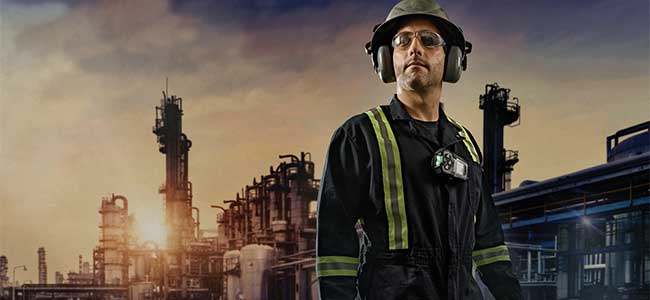
What Is a Gas Detection Wearable?
Answers to five frequently asked questions about this connected safety technology.
- By Anne Osbourn
- May 01, 2023
The number of workplace injuries remains largely unchanged year-over-year, with 2.6 million to 2.84 million nonfatal workplace injuries and illnesses reported by private industry employers each year from 2017 to 2021. Up to 90 percent of serious workplace injuries and accidents can be attributed to human error.
While PPE has not traditionally had the technological capabilities to help prevent worker injury due to human error, the latest safety innovations, such as gas detection wearables, can help provide visibility and data-driven insights to help your organization create an adaptable, proactive safety program and establish a culture of behavior-based safety. Connected, wearable products are one of the technologies leading the way for gas detection programs to evolve and enhance both their approach to worker safety and their approach to record-keeping, compliance and fleet management.
Transforming your organization to a connected program does not happen overnight. The first step is understanding the benefits of wearable technology and how a connected program can work for your organization.
To start, what is a gas-detection wearable? What are the benefits of connected safety technology? Here are answers to those and some other top questions.
1. What is a Gas Detection Wearable?
A gas detection wearable is designed to be worn by all individual workers, on their persons, while on the job site. Workers—especially lone workers in oil and gas, telecommunications, utilities and construction industries and industrial contractors—can simply clip the device directly to apparel or other PPE to receive certain critical gas readings and evacuation alerts for their location.
2. What Does the Term “Connected” Mean for Gas Detection Hardware?
A wearable gas detector that comes with automatic connectivity can be much more impactful in terms of driving transformation, efficiency and reaching long-term safety and productivity goals of a gas detection program.
The term “connected” not only means a connected device—one that comes with cellular connectivity through national networks—but also a comprehensive solution inclusive of hardware and software. Through this combination of cellular connectivity and hardware that is connected to software, connected devices can provide real-time data to help gather insights to help drive adaptable, proactive safety programs.
This article originally appeared in the April/May 2023 issue of Occupational Health & Safety.